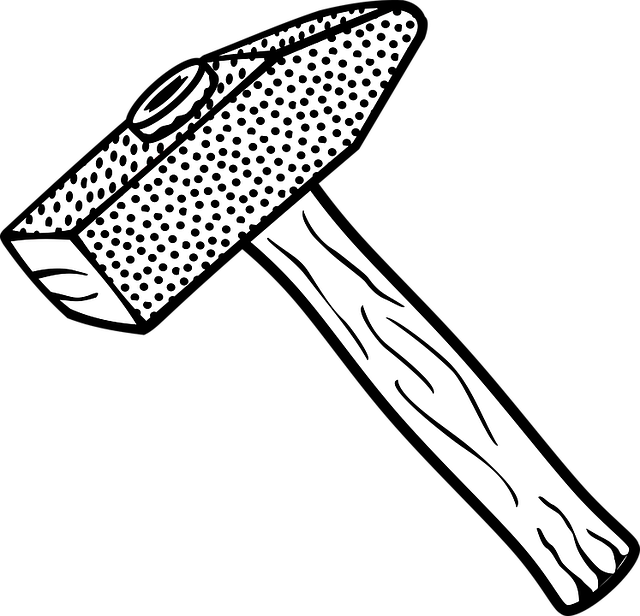Understanding Home Repair and Maintenance for HVAC (heating, ventilation, and air conditioning) systems is crucial. These systems regulate temperature and air quality through parts like outdoor condensers, indoor evaporator coils, thermostats, ductwork, and air handlers. Homeowners can identify issues, schedule preventive maintenance, and make informed repairs by familiarizing themselves with these components. Regular inspections, addressing common problems like refrigerant leaks and dirty air filters, prevent costly breakdowns, ensure system longevity, and optimize energy efficiency. Engaging licensed professionals for routine inspections further enhances system performance and comfort throughout the year.
In today’s digital era, proper home repair and maintenance, particularly of Heating, Ventilation, and Air Conditioning (HVAC) systems, is paramount for comfort and energy efficiency. Understanding the intricacies of these systems empowers homeowners to make informed decisions. This article guides you through the basics of HVAC maintenance, common issues, and best practices to ensure optimal performance and longevity. By mastering these strategies, folks can dive into their home repair and maintenance routines with confidence and expertise.
- Understanding HVAC Systems: Unraveling the Basics for Effective Maintenance
- Common HVAC Issues and How to Address Them Efficiently
- Best Practices for Regular HVAC Maintenance: Ensuring Optimal Performance and Longevity
Understanding HVAC Systems: Unraveling the Basics for Effective Maintenance

Understanding HVAC systems is a crucial step in ensuring effective maintenance and repair, especially for those tackling home repair and maintenance tasks. These systems are the unsung heroes of modern homes, responsibly keeping us cool in summer and warm during winter. At their core, HVAC (Heating, Ventilation, and Air Conditioning) systems involve a complex interplay of components: from the outdoor condenser to the indoor evaporator coils, air handlers, thermostats, and ductwork. Each part plays a vital role in maintaining air quality, temperature regulation, and energy efficiency within our living spaces.
By grasping even the basics of these systems, homeowners can better identify issues, schedule preventive maintenance, and make informed decisions when repairs are necessary. Regular inspection and understanding common problems can help prevent costly breakdowns. For instance, knowing how to check for leaks in refrigerant lines or recognizing when air filters need replacing are simple yet effective measures that contribute to the longevity and efficiency of your HVAC system.
Common HVAC Issues and How to Address Them Efficiently

HVAC systems are integral to our comfort, making it crucial to address common issues efficiently through effective home repair and maintenance. Problems like inadequate heating or cooling, unusual noises, or high energy bills are red flags indicating potential malfunctions. Regular inspections and timely repairs can prevent these issues from escalating, ensuring optimal system performance and extending equipment lifespan.
For instance, a malfunctioning thermostat could lead to temperature fluctuations, while dirty air filters restrict airflow, impacting indoor air quality and increasing energy consumption. Addressing these problems promptly through regular filter changes and simple adjustments can significantly enhance comfort and energy efficiency. Proactive maintenance, coupled with swift action on emerging issues, is key to ensuring your HVAC system operates smoothly year-round.
Best Practices for Regular HVAC Maintenance: Ensuring Optimal Performance and Longevity

Regular HVAC maintenance is a crucial aspect of home repair and maintenance, ensuring your heating, ventilation, and air conditioning systems operate at peak efficiency and extend their lifespan. The best practices involve scheduling routine inspections by licensed professionals who can identify potential issues before they become major problems. During these visits, components such as filters, ducts, thermostats, and coils should be checked for wear, tear, or blockages, cleaned if necessary, and replaced when appropriate.
Additionally, regular maintenance includes lubricating moving parts, checking electrical connections, and inspecting the overall system for any signs of damage or inefficiencies. By adopting these practices, homeowners can save on energy bills, prevent costly breakdowns, and maintain a comfortable living environment throughout the year.
Proper HVAC maintenance and timely repairs are essential components of any comprehensive home repair and maintenance regimen. By understanding the basics, recognizing common issues, and adhering to best practices, homeowners can ensure their comfort and energy efficiency for years to come. Regular care not only prolongs the lifespan of these critical systems but also prevents costly breakdowns. Investing in routine maintenance is a proactive approach that pays dividends in both comfort and savings.
